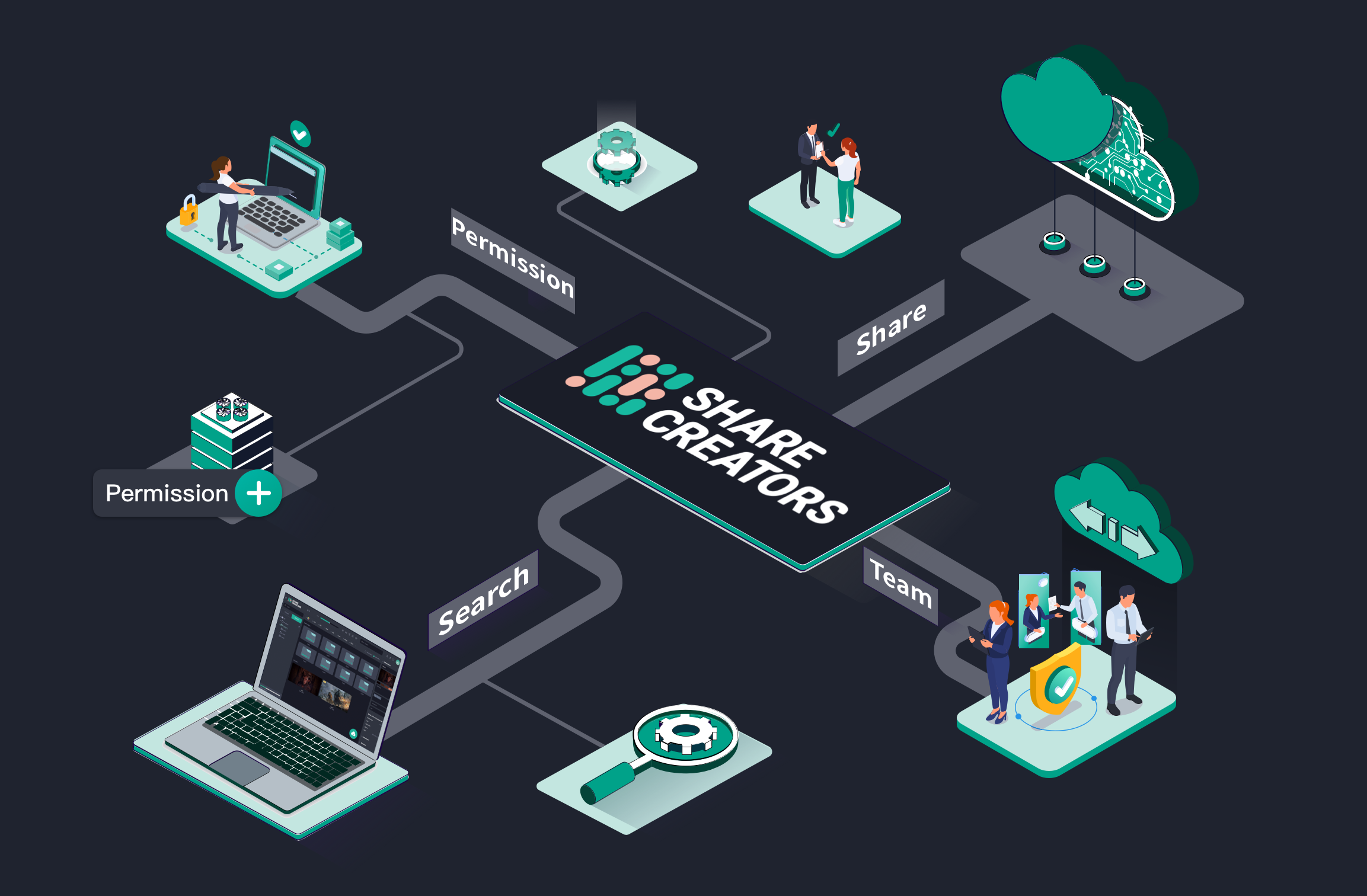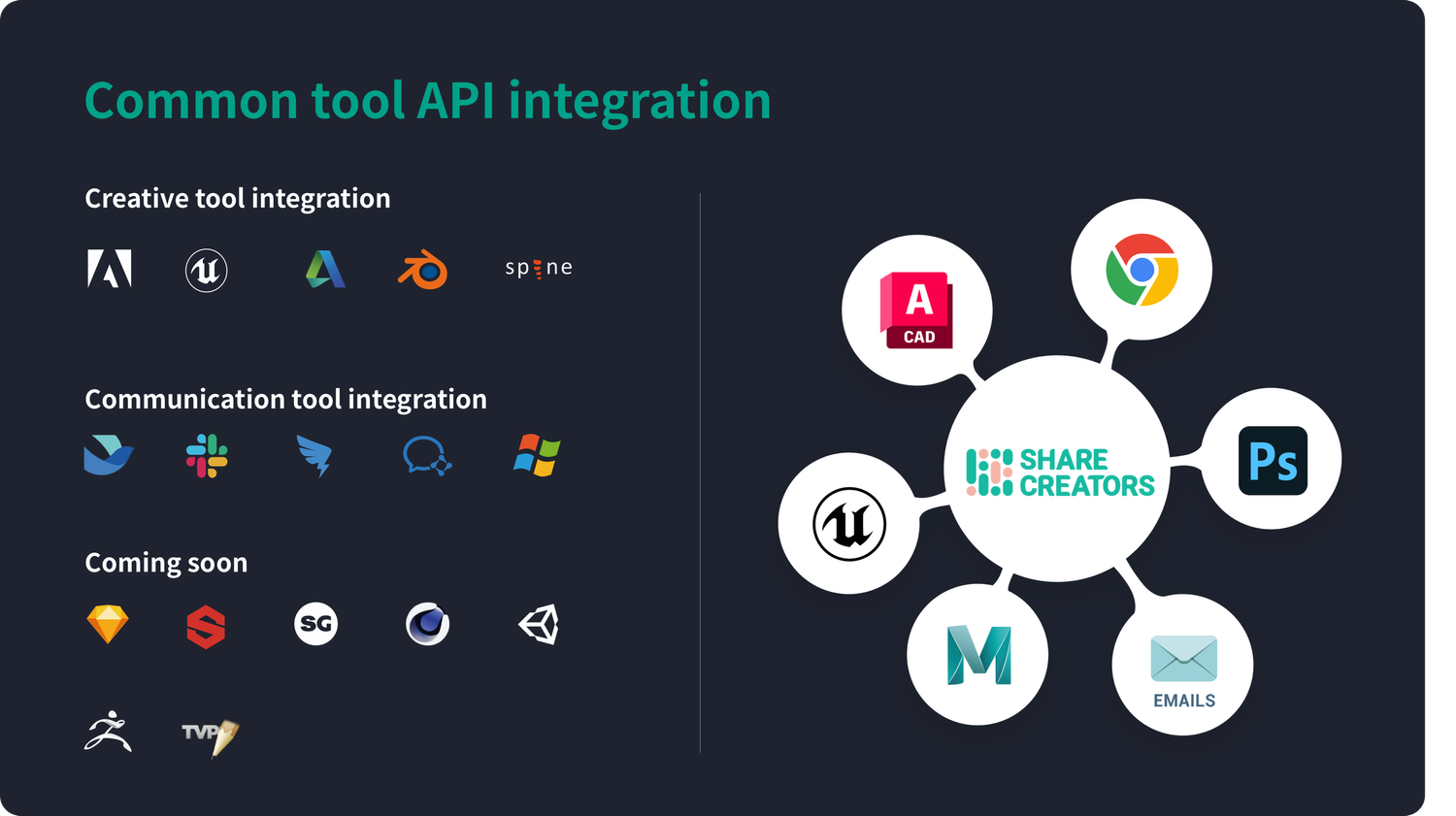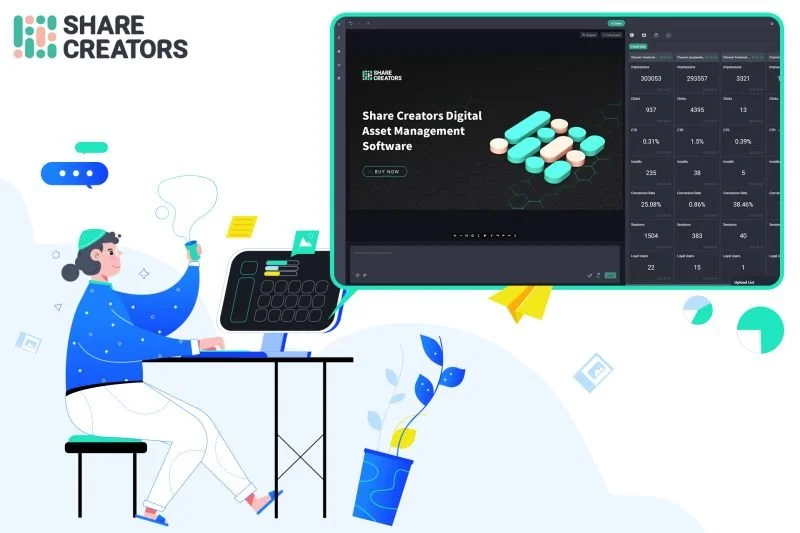Digital Asset Management 2024: What Does the Future Hold?
Digital Asset Management Enables Productivity and Teamwork
Digital asset management (DAM) has become an essential technology for businesses and organizations to store, organize, find, retrieve and share their digital media assets. As companies generate more photos, videos, presentations, documents and other digital content, they need robust systems to manage it all. The importance of DAM has grown significantly, with the global market estimated to reach $11.9 billion by 2027.
Key developments shaping DAM in 2024 include wider adoption of cloud hosting, integration of artificial intelligence, use of augmented reality and blockchain, more personalization and mobile optimization, and an emphasis on security.
DAM solutions have evolved from simple media repositories into intelligent hubs that organize content, optimize workflows, enable collaboration and provide actionable insights. Leading systems leverage automation, machine learning and other innovations to maximize value for users. An example of DAM software that offers this services is Blueberry.com and subscribe for a free trial.
This article will explore the state of DAM technology in 2024, profiling the latest trends and capabilities. We'll see how DAM continues advancing from basic digital libraries to smart, connected content ecosystems. For any organization managing photos, videos, documents and other digital assets, understanding modern DAM is essential.
Cloud DAM
The adoption of cloud-based digital asset management (DAM) solutions has rapidly accelerated, with most organizations now opting for Software-as-a-Service (SaaS) platforms over on-premise systems. The flexibility, scalability, and lower total cost of ownership offered by cloud DAM makes it an attractive option for companies of all sizes.
Cloud Adoption Enables Cloud Sharing and Flexibility.
Some key benefits driving cloud DAM adoption include:
Cost Savings: Cloud DAM eliminates large upfront licensing fees, ongoing maintenance, and the need for dedicated infrastructure and IT staff to manage systems. It follows a predictable subscription model for much lower total cost.
DAM enables Cost saving
Automatic Upgrades: Vendors handle all backend upgrades and maintenance seamlessly, so companies avoid costly and disruptive upgrade projects. New features and optimizations roll out automatically.
Flexibility & Scalability: Cloud DAM provides unlimited storage and bandwidth that can quickly scale up or down to match needs. This elasticity accommodates spikes in digital assets.
Accessibility: Assets are accessible from anywhere via the internet. This enables broader, global collaboration and distribution of digital content.
Disaster Recovery: Cloud platforms provide built-in backup and redundancy, safeguarding assets against data loss. This also minimizes downtime from outages.
Leading SaaS DAM platforms like Blueberry.com ,Bynder, Canto, Widen Collective, Brandfolder and others have driven rapid cloud adoption. Their solutions highlight the many benefits outlined above that on-premise systems lack. As digital transformation accelerates across all industries, cloud DAM has become a mission-critical platform for managing, distributing and maximizing value from digital assets.
Blueberry DAM Software
AI Applications
Artificial intelligence is transforming digital asset management in 2024. AI is being used in DAM systems to automate repetitive and time-consuming tasks like metadata generation, tagging assets, facial recognition, and transcription.
One key application of AI is auto-tagging. Rather than having humans manually tag every photo, video, or document that gets uploaded to a DAM, auto-tagging uses machine learning algorithms to automatically generate relevant tags based on the content and context of assets. This saves huge amounts of time and effort while improving findability.
AI also enables advanced visual search for digital assets. Instead of just searching by keywords or metadata, users can now search for visual elements within photos, videos, and graphics using AI-powered visual recognition. This makes it much easier to find relevant assets when you don't know the exact metadata or keywords associated with them.
Blueberry DAM Enables AI powered Graphics
Personalized recommendations are another way AI is transforming DAM. By analyzing usage patterns and metadata, AI can automatically suggest relevant assets that a specific user might need. This helps surface assets they may not have been aware of.
Overall, AI is making DAM systems smarter, faster, and more intuitive. It's allowing DAM platforms to understand digital assets at a deeper level and serve users' needs more efficiently through automation and enhanced discovery. AI will only continue revolutionizing digital asset management capabilities in the years ahead.
Augmented Reality
Augmented reality (AR) is becoming an increasingly important capability for digital asset management in 2024. AR allows users to preview and interact with digital assets in new and innovative ways through mobile devices and headsets.
One key application of AR is previewing assets like 3D models, products, or equipment configurations in a real-world context before finalizing designs or purchases. Users can visualize assets overlaid in physical spaces to judge fit, aesthetics, ergonomics and more. AR also enables collaborators in different locations to jointly review assets.
Another major use is adding contextual overlays and supplemental information to assets viewed through AR headsets or mobile apps. This helps users better understand assets and makes it easier to search, sort and select relevant assets. For example, a maintenance technician could view an asset like a vehicle engine with overlays highlighting parts, instructions and data.
AR improves digital asset management by making assets more interactive, understandable and connected to the real world. It enables new visualization, collaboration and contextualization capabilities that add value for DAM users.
Blockchain
Blockchain technology is transforming digital asset management in 2024, especially when it comes to rights management, licensing, and verifying assets. Blockchain provides a decentralized, distributed ledger that creates an immutable record of transactions. This enables more automated and transparent management of rights and licensing for digital assets.
For example, blockchain can be used to embed licensing information directly into digital assets through digital watermarking. This licensing data travels with the asset, enabling automated verification of usage rights. If an asset is used without proper licensing, the blockchain records this unauthorized usage.
Blockchain also facilitates seamless licensing transactions through smart contracts. Rights holders can pre-program smart contracts that automatically execute licensing transactions once predefined terms are met. This eliminates manual paperwork and makes digital asset licensing faster and more efficient.
Additionally, blockchain provides proof-of-ownership for digital assets. Each asset has a unique cryptographic hash registered on the blockchain ledger. This prevents unauthorized copies or derivative works, as the blockchain provides a verifiable record of the rightful owner.
Overall, blockchain technology brings transparency, automation, and decentralization to digital asset management. It has the potential to solve many of the rights management and licensing challenges that have plagued the digital asset industry.
Personalization
With the rise of artificial intelligence and machine learning, digital asset management in 2024 can provide highly customized and personalized experiences for users. DAM systems can now leverage user data and preferences to tailor asset organization, search, recommendations, and workflows for each individual in an organization.
For example, advanced algorithms can analyze a user's search history and engagement with assets to understand their interests. The DAM will then automatically tag and suggest relevant assets catered specifically to that employee. As users interact more with the system, the personalization and customization improves continuously.
DAM platforms are also integrating with customer relationship management (CRM) systems and marketing automation tools. This allows assets like brand images, campaign materials, and product photos to be dynamically assembled and served to customers based on their profile and behaviors. A global company can automatically localize and personalize assets shown to website visitors without any manual work.
The customized interfaces, automated workflows, and personalized asset suggestions enabled by AI makes it easier than ever for users to find and utilize the most relevant digital assets. This improves productivity, brand consistency, and the overall user experience. While respecting privacy concerns, personalization allows DAM platforms to feel like an intuitive and smart virtual assistant rather than just a digital filing cabinet.
Integration
Digital asset management systems are integrating more deeply with other martech systems and workflows in 2024. DAM solutions are no longer siloed - they are connecting directly to:
DAM Enables API Integration
Marketing automation platforms: DAM provides a central repository of approved assets that marketing teams can access directly within their MA platform when building campaigns and workflows. This reduces duplicate uploads and keeps brand assets on-message.
Web content management systems: Editors can access DAM assets from within their CMS without switching between systems. This enables a more seamless content creation workflow.
Product information management systems: DAM provides the product images while PIM manages product data and information. Connecting the two systems together gives a single source of truth for product content.
Print and packaging workflows: Graphics teams can access packaging templates and branding assets within DAM systems when designing for print. This ensures brand consistency across digital and print touchpoints.
E-commerce platforms: DAM gives e-commerce teams easy access to hundreds of on-brand product images to display across their sites and apps. Merchandisers can maintain assets directly in DAM rather than manually across many sites.
CRM systems: Sales and customer service teams can access approved collateral, logos, and other assets directly within their CRM platform for inclusion in presentations, emails, and campaigns.
This comprehensive integration eliminates silos between systems and teams. DAM serves as the centralized hub connecting workflows across the enterprise for maximized efficiency and brand consistency.
Mobile Optimization
The rise of mobile devices has significantly impacted digital asset management in recent years. With more employees and customers accessing content on phones and tablets, DAM systems have adapted to be mobile-friendly.
One key trend is the optimization of DAM interfaces and functionality for touch screens. Vendors have redesigned interfaces with larger buttons, swipe gestures, and responsive layouts tailored to different device sizes. This enables users to easily search, browse, edit metadata, share, and take other actions from their mobile devices.
Mobile apps for DAM are also becoming more common. Rather than rely solely on mobile websites, organizations can deploy native iOS and Android apps to provide robust mobile access to assets. These apps allow for offline access, push notifications, camera integration, automated syncing, and other beneficial features.
The rollout of 5G networks worldwide will further accelerate mobile DAM capabilities. With ultra-fast speeds and low latency, 5G enables high-resolution media viewing and editing on phones and tablets. Large video and image assets can be downloaded almost instantly. This will increase remote productivity and real-time collaboration on assets from anywhere.
Overall, DAM platforms are focused on mobile optimization to align with modern workforce trends. Smooth mobile access ensures that users across an organization can securely find, share and utilize digital assets whenever and wherever needed.
Security
With the growth of digital assets comes an increased need for security. As more content is created and distributed digitally, cyber threats continue to evolve. Some key security considerations for digital asset management in 2024 include:
Digital Asset Management Enables Security Management
Emerging Threats
Ransomware continues to be one of the top threats, with more sophisticated attacks targeting media companies and content creators. Attackers may encrypt not just files but entire DAM systems.
Deep fakes using AI to manipulate images and videos in undetectable ways. This can undermine trust in content authenticity. Watermarking, blockchain, and advanced AI detection will be needed.
Insider threats from disgruntled employees, contractors or compromised accounts. Role-based access controls, activity monitoring, and protocols are important.
Prevention Tactics
Multi-factor authentication helps secure access and prevent account takeovers.
Automated vulnerability scanning finds weaknesses to address. Penetration testing by white hat hackers also helps harden defenses.
Backups and redundancy limit damage and recovery time from attacks. Air-gapped offline backups provide an extra layer.
Endpoint security with antivirus, firewalls, and intrusion prevention defends against malware. Keeping software patched and updated is essential.
Data encryption protects files and communications from interception.
Regulations
Data privacy laws like GDPR and CCPA require protection of personal info in assets. Data minimization, access controls and consent management are key.
Industry standards like ISO 27001 help manage security practices. Certification can be used to demonstrate due diligence to clients.
Cyber insurance can offset costs of breaches, but insurers require rigorous controls for coverage.
With a layered defense and proactive approach, the security risks of digital asset management can be managed. But constant vigilance is required as threats rapidly evolve.
Digital asset management has come a long way in the last few years and is poised for even more innovation and growth. Some key developments we've seen that will continue shaping DAM in 2024 include:
The move to the cloud and SaaS models, enabling easier scalability, collaboration, and mobility
The integration of AI and machine learning to automate metadata tagging, discovery, analytics, and more
A focus on personalization, delivering tailored assets and experiences to users
Tighter integration between DAMs and other solutions through APIs and connectors
The exploration of emerging tech like AR, VR, and blockchain to enhance asset visualization, security, and distribution
Looking ahead, we can expect DAM platforms to become even more intelligent, providing predictive recommendations and automation to simplify asset management. Mobile optimization will be critical as more employees and customers access assets remotely. And security will remain a top concern with the rise in cloud storage and stricter data regulations.
DAM's growth will likely continue as organizations recognize the value of centralized, smart systems to manage their expanding volumes of digital content and data. With innovative new features and integrations, DAM solutions will evolve into even more powerful hubs for creating, discovering, and delivering assets across the enterprise Check out free trail at blueberrydam.com for this solutions!







